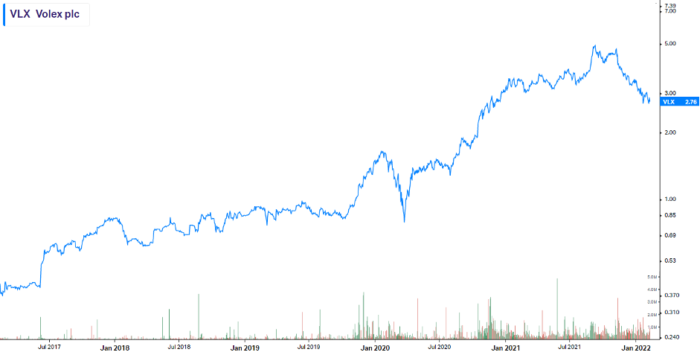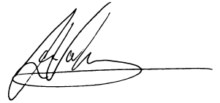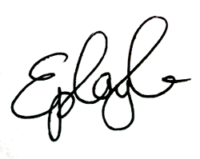Stock Alert: Britain’s “silent heroes” of World War I
11th February 2022 |
As World War I raged on, the Allies from the Commonwealth were fond of the Lee-Enfield.303 rifle when shooting at Austrians and Germans.
The Austrians had a penchant for the Steyr-Mannlicher M95 and the Germans were keen on the Mauser M98G 7.92mm.
Both sides also used an array of machine guns, mortars, variations on poison gas, tanks, aircraft, submarines… and the Germans even notoriously used flamethrowers!
However, while visceral in their impact and power, it was none of these weapons that proved to be most potent in World War I.
In fact, the key to success wasn’t a rifle, a tank or even a flamethrower.
The key to success was clear, efficient and effective communication.
Much like the actual warfare, and even weaponry, communication strategies and technologies advanced as the war dragged on over four years.
Early on in the war, means of communication included foot soldiers, automobiles and even carrier pigeons.
However, these cumbersome and inefficient systems were no good, given the scale of military operations which soon spanned the world.
Seen as a game changer in the war, hardwired electrical communications were deployed. This included telegraph and telephone communications between the front lines and more distant command headquarters.
However, the tanks, rifles, mortars… flamethrowers, also meant that the intricate systems of telephone lines and cables fitted around the trenches were easily destroyed.
Quickly the combatants figured out these systems were also no good. An alternative was quickly needed.
How do you fix communication if wires are easily destroyed? Go wireless.
Radio communications were that alternative and the real game changer of the war.
Originally, radio sets were frowned upon for use in the war. They could easily be intercepted and they were still in their earliest iterations, having only being invented in 1895. They were, and were seen as being, unreliable.
But the practicality and convenience that radio systems provided meant they could no longer be ignored.
As such, the fighting forces focused on harnessing the power of radio communications.
May Day, May Day!
In particular, air warfare became increasingly reliant on radio communications.
Prior to this, pilots communicated by dropping messages to the ground. They would receive messages from below via strips of black and white cloth laid on the ground.
With air warfare intensifying, the Royal Flying Corps (RFC – the forerunner of the Royal Air Force) demanded a better system if victory were to be achieved from the air.
Radio communications provided the answer.
It allowed pilots and ground forces below to share vital intelligence with each other in a matter of seconds. It also saved the distraction of looking out for visual messages below – not ideal if a German bomber was in close proximity.
The first wireless sets for installation were heavy and had a short range.
For example, a battery pack and transmitter used at the start of the war were around 45kg in weight and took up an entire seat on a plane – sometimes overflowing into the pilot’s area.
In addition, radio antennas, which transmit and receive radio signals, had to be reeled in from the back of the plane before landing – another needless distraction.
However, by 1916, more robust and lighter radio sets were developed for aircraft. Smaller antennas were developed and attached to the body of the plane.
Also, the development of ear receivers and throat microphones in 1918 made for a hands-free radio system which meant the pilot could firmly focus on steering the plane whilst communicating.
As much as the warfare itself, radio systems played an integral but largely unappreciated role in helping Britain to conquer its enemy.
From wartime to world-changing global trends
Your latest Frontier Tech Investor recommendation provided a mission-critical element of the Allied forces’ success in the skies during World War I.
Its wiring technology served as a vital connector in efficient and effective radio communication for pilots and ground control.
Without them, perhaps the Allied forces might not have been as effective in fighting the enemy.
Whilst most people think of the feet on the ground fighting the war, there was also entire industry developing, innovating and producing equipment and crucial technologies to win the war. These are the “silent heroes” of the war effort.
And it’s that grounding 100 years ago that leads us to your latest recommendation.
Today, this “silent hero” British manufacturing stalwart that you’ve likely never heard of continues to have a hand in providing technologies at the forefront of industry that’s taking our world into a more liveable, connected and prosperous future.
These industries are emerging as world-changing global trends, including electric vehicle (EVs) charging networks and big data networks.
Introducing your latest Frontier Tech Investor recommendation…
Volex (LSE: VLX) is your latest Frontier Tech Investor recommendation. Volex is a global manufacturer of power and connectivity products.
The company is an AIM-listed company on the London Stock Exchange. It has a market cap of £432.53 million and a current share price of 277GBp.
Volex is based in Basingstoke, UK.
As discussed, the company has an illustrious history, dating back to 1892. It was originally established in Gorton, Manchester by Meyer Hart Goldstone and James Henry Ward.
It incorporated in 1919, when it was registered under the name of Ward & Goldstone Ltd. After the last members of the Goldstone family left the board in 1984, the company changed its name to Volex Group.
The company had been hit particularly hard by the dotcom telecoms crash of 2001 and refocused away from its roots as a telecoms provider to provide for the medical and industrial sectors. In doing so, it changed its name to Volex in 2011.
Volex today is a provider of connectivity solutions and power products.
The company is seeking to be the technology bridge between a more interconnected world.
When it comes to electronic products, the company leaves no stone left unturned. Volex manufactures almost any connectivity source you can think of, including power cords, cables, fibre optics, connectors and charging plugs.
These might seem a little boring. However, when you really think about it, these are the critical mechanisms through which our world is powered.
They are the lifeblood of today’s technologies and many nascent, fast-growing industries of the modern day.
These industries include artificial intelligence (AI), medical technology, data networks and, importantly, electric vehicles (EVs).
Volex serves each in its own unique way by tailoring its electrical products to meet the requirements of its customers.
It has a strong global presence, with 17 manufacturing locations across Asia, Europe and North America.
Volex can deliver high-quality, yet favourably priced electrical parts which bring cost and supply chain efficiencies to its customers.
In particular, Volex manufactures high-speed power cables for big data centres. The cables can be manufactured to any power wattage or length and be adjusted to the requirements of the destination country.
It allows for seamless data transfer and storage across networks, at a time where more businesses are adopting flexible, on/off premise working patterns following the pandemic.
In addition, Volex manufactures a variety of power cords, plugs and connectors, including pin plugs and cord reels. All are applicable to everyday devices, including TVs, laptops and air conditioning systems. They can also be adapted to many specialist devices such as medical imaging and surgical machines.
When the Covid-19 pandemic went global, there was a surge in demand for Volex’s connectors in temporary hospitals in China (the epicentre of the pandemic) and for manufacturing of ventilators in North America and Europe.
However, what excites us the most about Volex is its involvement in one of the most exciting industries of the modern day – EVs.
Volex manufactures EV charging grid plugs which act as the critical link between the vehicle and charge point.
A feature of Volex’s grid plugs is the ability to maintain efficiency and durability under extreme temperatures.
For example, the charging grids can successfully between a temperature range of minus 40 degrees Celsius and 90 degrees Celsius. They also have overcharge sensing, which prevents the dissipation of energy and ensures maximum charging efficiency.
Interestingly, Volex is understood to be a supplier to Tesla (NASDAQ: TSLA), the world’s largest producer of all-electric cars – although Volex hasn’t explicitly revealed this.
Furthermore, as The Times explains in an article about the company from June 2021,
The group has long been a supplier to the likes of Apple, Microsoft, Philips, the Dutch electronics group, and the Dyson household gadgets empire. Its cords and cables have been selling fast in the era of working from home through ecommerce channels that typically include Amazon.
The article also highlights that one of Volex’s biggest investors is Nat Rothschild, of the $400 billion Rothschild family dynasty and heir apparent to the title of Baron Rothschild.
Volex, therefore, has the pedigree, the clients with massive brands in rapidly growing industries and the well-funded (and connected) investors. Following the most recent sell-off in many technology-related stocks, Volex is well placed for the next stage in its expansion.
Of course, the latest slippage in Volex’s own share price means that it is, in our view, even more attractive as a stock.
For a company that’s profitable and also has growth potential it makes for the perfect addition to our buy list.
Financials, risks and action to take
For the full year ended 4 April 2021 (FY2021), Volex recorded revenues of $443.3 million. This is a 13.3% increase on the same period in the previous year (FY2020).
What’s impressive is Volex’s ability to generate a profit despite coronavirus headwinds.
For FY2021, Volex recorded an operating profit of $42.9 million. This is an increase of 35.8%.
In part, Volex’s healthy figures have been driven by growing demand for its EV grid plug components.
Following the COP26 climate summit talks, the EV industry is being pinpointed as an important way in which to deliver stringent emissions targets by policy-makers.
For example, the US government envisages the installation of 500,000 publicly accessible chargers by 2030 (up from 100,000), while the sale of new diesel and vehicles we be cut back by 50%.
Crucially, Volex has a stronghold in this market, with 46% of Volex’s revenues coming from the United States. It has helped to drive record revenue figures from its EV customers, giving a staggering 193% year-on-year increase.
For FY2021, the company paid a dividend of 2.2GBp per share. This is a 10% increase on the dividend for FY2020.
Volex recorded a net debt figure of $27.3 million at the end of FY2021. We acknowledge this, but we are not currently deterred by it.
This is largely because Volex has been able to finance six strategic acquisitions since 2018 in order to strengthen capabilities.
One of these was a £14.3 million acquisition of GTK, a UK-based provider of electronic cables and connectors, in December 2018. The acquisition gives Volex direct access to GTK’s 300-strong customer base.
In other words, Volex has proven that it has the ability to envisage and execute acquisitions as it increases its share of various markets in which it operates.
That said, it’s important to consider the risks the company faces.
One of the main risks the company faces is competition, especially in the EV industry.
As demonstrated above, EV charging infrastructure is becoming more ubiquitous around the world, as countries make the transition to green energy alternatives.
Volex must ensure it remains competitive by keeping its costs down and maintaining quality. However, this may be difficult whilst servicing its net debt and continuing its business expansion.
To mitigate the risk of competition, Volex has 24 patents across other areas of the businesses. In the main, the patents focus on the transmission of electrical signals between connectors and devices. The diversification here could be key to minimising the impact of competition brought by the EV industry.
Another risk to consider is the ongoing semiconductor shortage which is blighting many of the industries which Volex serves.
This includes the automotive and consumer electronics industries.
If the shortages persist, Volex’s customers may be forced to scale back output, with the result that demand for Volex’s products falls.
Finally, a return to post-pandemic normality may actually do little to help Volex.
A large move away from working from home (WFH) to working from the office may mean there is less need for businesses to transfer data between on/off-site premises. As such, we could see a slowdown in demand from Volex’s data centre customers, which accounted for $41.9 million in revenue for FY2021.
Nevertheless, we believe Volex has a huge part to play in delivering greater interconnectivity to a world that is becoming increasingly digitalised.
Volex’s components played a key role in aerial combat in World War I. Just over one hundred years later, its components are playing key roles in the industries of the future.
Action to take
Volex is an AIM-listed company on the London Stock Exchange. It has a market cap of £432.53 million and a current share price of 277GBp.
The average volume is around 792,500, which equates to around £2.42 million in value. We’d say that this is a fairly liquid stock, meaning that on recommendation, the price should remain relatively stable.
Nevertheless, be mindful of any volatility and ensure you stick to our buy limits. If it moves above it, it becomes an active hold, and if it moves below, it becomes a buy.
Action to take: buy Volex (LSE: VLX), current price 277GBp, buy up to 330 GBp. As a reminder, we are doing away with stop losses altogether, to save us getting stopped out unnecessarily of stocks that have solid long-term potential. So, please ensure to manage risk accordingly, and stay up to date with our advice on any action to take.
Name: Volex
Ticker: VLX.L
Closing mid-price as of 11/02/2022: 277GBp
Market cap: £440.44 million
52-week high/low: 494.70GBp/228.85GBp
Buy up to: 330 GBp
 Source: Koyfin
Source: Koyfin
Sam Volkering
Editor, Frontier Tech Investor
Elliott Playle
Junior Analyst, Frontier Tech Investor




